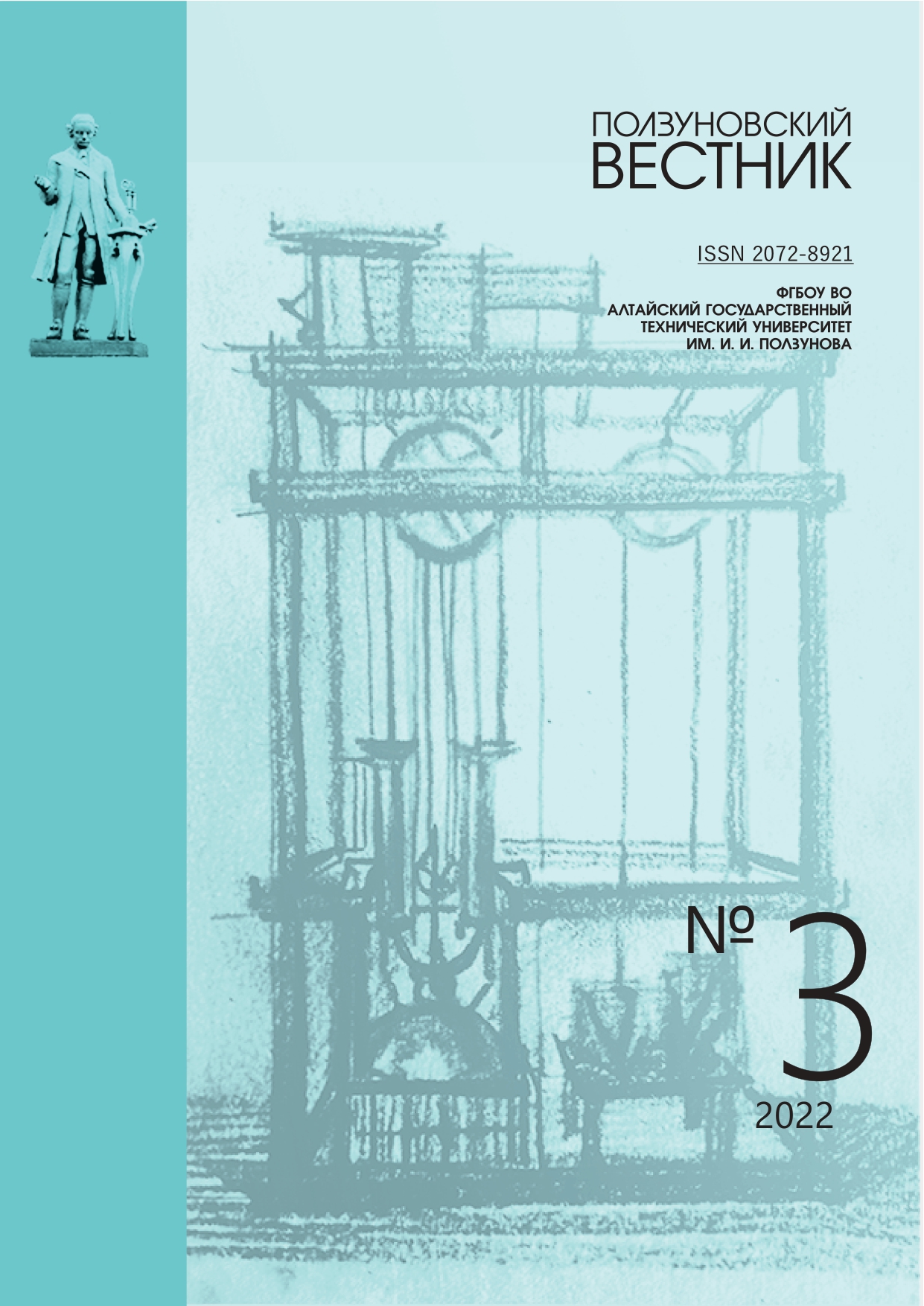СОВЕРШЕНСТВОВАНИЕ ТЕХНОЛОГИИ ПРОИЗВОДСТВА ЭФИРНОГО МАСЛА ИЗ МОЖЖЕВЕЛЬНИКА
EDN: XZTJBU
DOI:
https://doi.org/10.25712/ASTU.2072-8921.2022.03.026Ключевые слова:
Ключевые слова: исследование, эфирные масла, дистилляция, патент, оборудование, можжевельник обыкновенный, можжевельник сибирский, можжевельник казацкий, показатель преломления, относительная плотность.Аннотация
Для производства эфирных масел в России имеется большой перечень эфиромасленичного сырья которое можно использовать для промышленного производства эфирных масел. Эфирные масла используются в медицине, косметологии и пищевой промышленности. Многие виды масел используются в качестве ароматизаторов и пищевых добавок. Высокая стоимость импортного сырья и условия санкций заставляют искать источники эфирных масел внутри страны. Можжевельник является вторым по разнообразию среди хвойных деревьев. Препараты, получаемые из древесной зелени можжевельника широко применяются в медицине благодаря значительному содержанию в древесной зелени различных специализированных метаболитов таких как кумарины, флавоноиды, лигнаны, стеролы и терпеноиды, что сделало растение Juniperus фармацевтически ценными. Производство эфирного масла из растений рода Juniperus с использованием технологического процесса методом дистилляции предполагающий использование высоких температур (дистилляция, паровая дистилляция и др.), приводят к потерям некоторых летучих веществ и разложению ненасыщенных или сложноэфирных соединений за счет термического или гидролитического воздействия Целью данного исследования являлось совершенствование технологии производства эфирного масла из древесной зелени и плодов можжевельника с использованием нового технологического оборудования, обеспечивающее сокращение его продолжительности, повышения выхода и качества, вырабатываемого можжевелового эфирного масла. Объект исследования – древесная зелень растений рода Juniperus (Juniperus communis, Juniperus sibirica, Juniperus sabina) заготовленная в Братском районе Иркутской области в сентябре 2021 года. Результаты выполненных исследований показали, что производство эфирного масла из растения рода Juniperus является сложным технологическим процессом из-за сложности структурного разрушения клеток при существующих технологиях и продолжительным по времени. Разработка новой технологии и оборудования позволили обеспечить повышение производительности аппарата и сокращения продолжительности технологической переработки сырья одной загрузки достигается за счет интенсификации процесса паровой обработки эфиромасличного сырья водяным паром, который, проходя через измельченное сырье, перемешивается с частицами эфирного масла, увлекая их за собой в холодильник и далее во флорентину, где происходит разделение конденсата на масло-сырец и флорентинную воду.
Библиографические ссылки
Ткаченко К.Г. Флора России – потенци-альный источник перспективных эфиромаслич-ных растений // Научный и инновационный по-тенциал развития производства, переработки и применения эфиромасличных и лекарственных растений. Материалы Международной науч.-практ. конференции. 2019. С. 7 – 144.
Сокращение сброса пихтового масла при его производстве / Т.В. Невзорова [и др.]. // Вестник КрасГАУ. 2011. № 10(61). С. 201-204.
Невзоров, В. Н., Кох Ж. А., Мацкевич И. В. Совершенствование процесса отгонки эфирно-го масла из семян черной смородины // Наука, образование и бизнес: новый взгляд или страте-гия интеграционного взаимодействия. – г. Наль-чик: ФГБОУ ВО "Кабардино-Балкарский государ-ственный аграрный университет имени В.М. Коко-ва", 2021. С. 148-152.
Эфирные масла хвойных сибирских растений Красноярского края как объект регио-нального экспорта / В.Н. Невзоров [и др.]., // Прио-ритетные направления развития регионального экспорта продукции АПК: Мат-лы Междунар. науч.-практ. конференции, Красноярск, 13–20 но-ября 2019 года. – Красноярск: Красноярский гос-уд. Аграр.ун- тет, 2019. С. 102-106.
Ткаченко К. Г., Варфоломеева Е. А. Эфирные масла – репелленты и/или инсектици-ды. Перспективы использования для защиты рас-тений // Инновационное развитие экономики. Ма-териалы второго Крымского инвестиционного фо-рума. ФГБУН «НИИСХ Крыма, Науч.-техн. Союз Крыма. 2020. С. 109 – 114.
Ткаченко К. Г., Зенкевич И. Г., Коробова М. М. Особенности переработки растительного сырья для увеличения выхода эфирных масел // Растительные ресурсы. 1998. Т. 34. Вып. 3. С. 129-137.
Ткаченко К. Г. Эфирномасличные рас-тения и эфирные масла: достижения и перспек-тивы, современные тенденции изучения и приме-нения // Вестник Удмуртского университета. Био-логия: науки о земле. 2011. Вып. 1. С. 88-100.
ГОСТ ISO 8897-2017. Масло эфирное можжевеловое (Juniperus communis L.). Техниче-ские условия: введ. 2018.07.01. Москва, 2019. 8 с.
ГОСТ ISO 280 – 2014. Масла эфирные. Метод определения показателя преломления: введ. 2016.01.01. Москва, 2016. 8 с.
ГОСТ ISO 279 – 2014. Масла эфирные. Метод определения относительной плотности при температуре 20°С: введ. 2016.01.01. Москва. 2016. 8 с.
Импульсный аппарат для переработ-ки эфиромасличного сырья: пат. 2465308 Рос. Федерация № 2011120642/13; заявл. 20.05.2011; опубл. 27.10.2012, Бюл. № 30.
Загрузки
Опубликован
Как цитировать
Выпуск
Раздел
Лицензия
Copyright (c) 2022 Игорь Викторович Мацкевич, Виктор Николаевич Невзоров, Жанна Александровна Кох

Это произведение доступно по лицензии Creative Commons «Attribution» («Атрибуция») 4.0 Всемирная.
















 .
. Контент доступен под лицензией
Контент доступен под лицензией 
